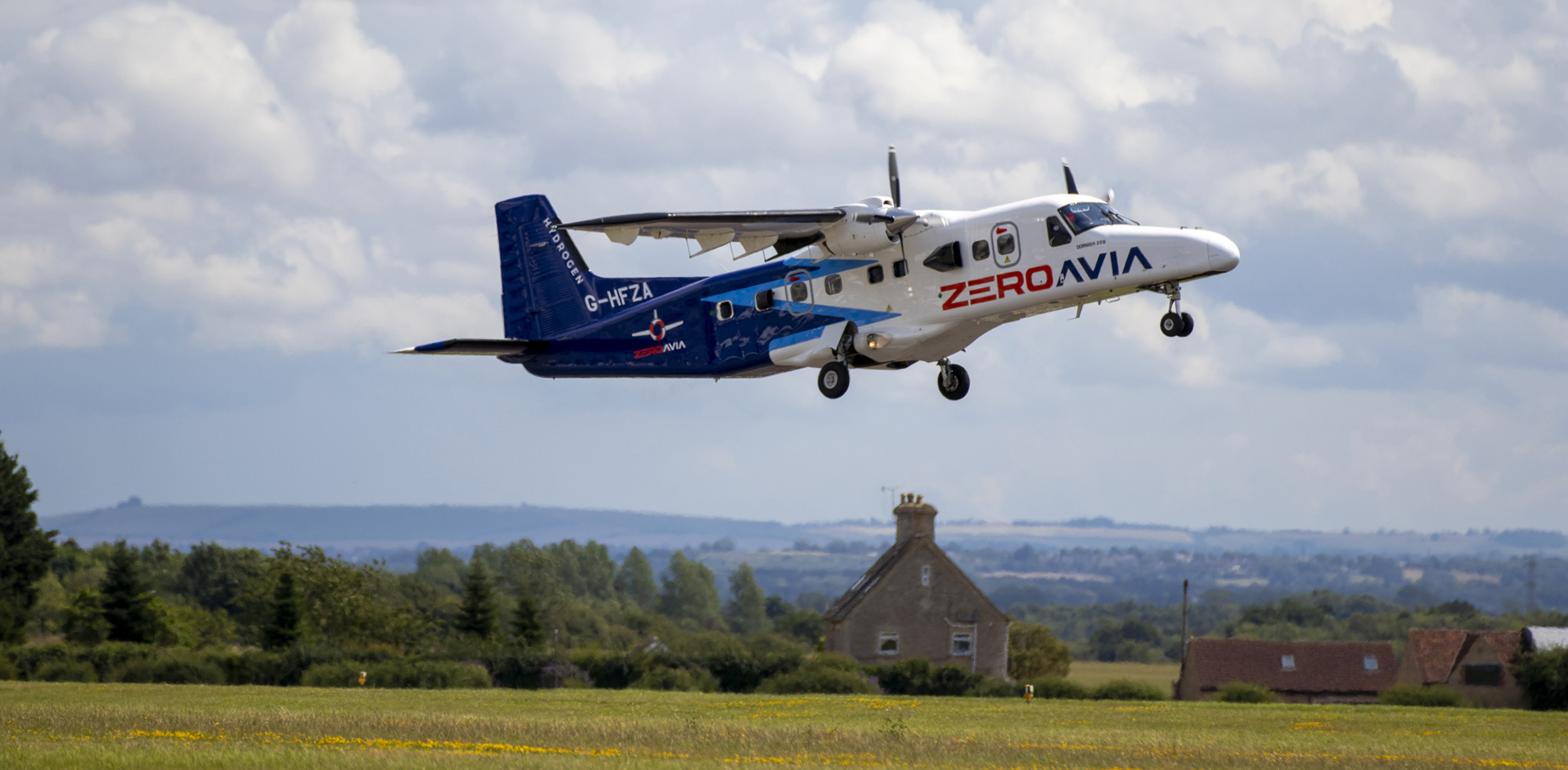Having flown its hydrogen-powered Dornier 228 testbed airplane 10 times over the past six months, ZeroAvia says it has wrapped up its initial flight test campaign and is now preparing for its first cross-country flights. ZeroAvia retrofitted the 19-seat twin turboprop with a prototype of its 600-kilowatt ZA600 powertrain, which uses hydrogen fuel cells to generate electricity.
With one of its engines replaced, the converted Dornier 228 made its first hydrogen-powered flight in January at Cotswold Airport in the UK, Over the course of the test campaign, the Dornier 228 reached altitudes of up to 5,000 feet and operated in temperatures ranging from just above freezing to 30 degrees Celsius (86 degrees Fahrenheit), according to ZeroAvia.
Throughout all 10 flights, the hydrogen-electric propulsion system “performed at or above expectations,” with the ZA600 engine matching the power output of the fossil fuel-powered engine on the opposite wing, the company said. In some cases, ZeroAvia’s pilots even flew the aircraft with the conventional engine shut down, using only a single hydrogen-powered engine.
ZeroAvia conducted the Dornier 228 flight campaign as part of the HyFlyer II Project, a government-funded research and development program run by the UK’s Aerospace Technology Institute, Innovate UK, and the Department for Business and Trade.
While ZeroAvia has been testing the Dornier 228 in the UK, where the company has multiple facilities, its official headquarters are in Hollister, California. ZeroAvia is also building a new research and development facility at Paine Field airport near Seattle, where it is working to retrofit a De Havilland Dash 8-400 twin turboprop with its more powerful ZA2000 hydrogen fuel cell-based propulsion system.
California-based ZeroAvia Remains Committed to UK
Although its work with the UK’s HyFlyer II project is now complete, ZeroAvia intends to maintain its presence in the UK, a company spokesperson told FutureFlight. Of the company’s more than 200 employees, about two-thirds are located in the UK. The spokesperson said ZeroAvia intends to apply for additional funding from research and development projects in the UK, and it is exploring manufacturing and retrofit operations at its locations in the UK as well. In October 2022, ZeroAvia acquired fuel cell specialist HyPoint, which has its main research and development site at Sandwich in southeast England.
In June 2023, during the Paris Air Show, the UK's Department for Business and Trade announced a further £218 million ($279 million) in funding through the Aerospace Technology Institute, the joint industry-government-backed agency that funded the HyFlyer II project. This tranche of funding was allocated to 10 projects focused on developing more efficient landing gear, wings and engines, as well as on production and maintenance techniques. Airbus, Safran and Rolls-Royce were among the main beneficiaries, with the latter given money for work on gas turbines.
ZeroAvia is now working to begin the certification process for its ZA600 hydrogen fuel cell-powered engine, initially with the UK’s Civil Aviation Authority, and the company is targeting 2025 for entry into service, with routes such as London to Rotterdam identified as likely early use cases for the technology. It aims to eventually obtain supplemental type certificates for a variety of aircraft to be converted to hydrogen power.
The company has reported more than 1,500 provisional sales agreements with customers, including Monte Aircraft Leasing, which recently secured the first delivery slots. Commercial carriers that have publicly expressed interest in adding hydrogen-powered aircraft to their fleets include American Airlines and United Airlines, both of which are investors in ZeroAvia, and Alaska Air Group.
As it prepares for converted aircraft to start flying with airlines, ZeroAvia has been working with airports and fuel providers to ensure that sufficient supporting infrastructure is in place. These partnership projects include work with airports in Scotland and also at Birmingham Airport in England.
